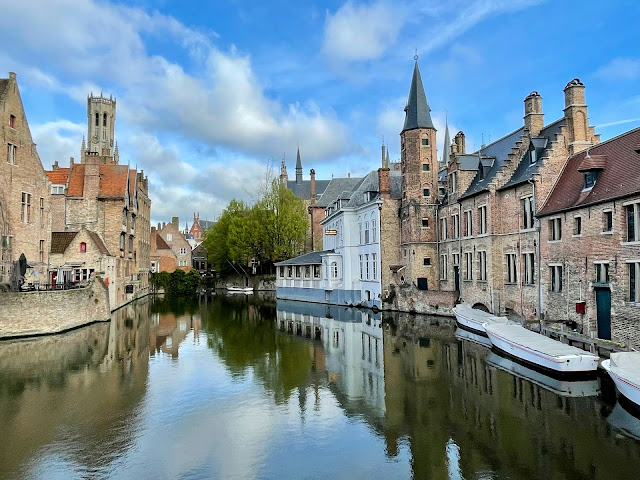What is the History of Belgian Cuisine?
Belgian cuisine is the result of a long and complex history that has shaped the country's culture, geography, and politics. Belgium is a small country in Western Europe that borders France, Germany, Luxembourg, and the Netherlands. It has three official languages: Dutch, French, and German, and each linguistic region has its own culinary traditions and specialties. Here are some of the historical influences that have contributed to the diversity and richness of Belgian cuisine.
Prehistoric and Roman Times
The earliest inhabitants of Belgium were the Celts, who lived in the area from around 2000 BC to 52 BC. They were mainly farmers and herders who cultivated grains, vegetables, fruits, and nuts, and raised cattle, sheep, pigs, and chickens. They also hunted wild animals such as deer, boar, and hare, and fished in rivers and lakes. They cooked their food over open fires or in clay pots, and used herbs and spices such as garlic, onion, parsley, thyme, and mint to flavor their dishes.
In 52 BC, Belgium was conquered by Julius Caesar and became part of the Roman Empire. The Romans introduced new foods and techniques to Belgium, such as cabbage, lettuce, leeks, asparagus, grapes, apples, pears, cherries, plums, olives, cheese, wine, vinegar, honey, bread, pastry, and pasta. They also built roads, aqueducts, villas, baths, and temples that improved the infrastructure and trade of the region.
Middle Ages
After the fall of the Roman Empire in the 5th century AD, Belgium was invaded by various Germanic tribes such as the Franks, Saxons, Alemanni, and Burgundians. The Franks established a powerful kingdom that ruled most of Western Europe for several centuries. They adopted Christianity as their official religion and spread it throughout their lands. They also continued to farm and trade with other regions.
In the 9th century AD, Belgium was divided into several feudal states that were ruled by different lords and bishops. These states often fought with each other or with foreign invaders such as the Vikings and the Normans. The feudal system created a social hierarchy that influenced the food culture of Belgium. The nobility and clergy enjoyed lavish banquets with meat, game, fish, cheese, bread, wine, beer, and spices imported from Asia. The peasants ate simple meals with grains (such as barley or rye), vegetables (such as turnips or carrots), legumes (such as beans or peas), dairy products (such as butter or cheese), eggs (from chickens or ducks), fruits (such as apples or pears), nuts (such as hazelnuts or walnuts), honey (from bees or wildflowers), herbs (such as sage or rosemary), and water.
Renaissance and Modern Times
In the 15th century AD, Belgium became part of the Burgundian Netherlands under the rule of the Dukes of Burgundy. The Burgundian court was renowned for its cultural and artistic achievements as well as its gastronomic sophistication. The Dukes of Burgundy patronized chefs who created elaborate dishes with exotic ingredients such as sugar (from cane or beet), chocolate (from cocoa beans), coffee (from coffee beans), tea (from tea leaves), potatoes (from South America), tomatoes (from Mexico), corn (from North America), turkey (from North America), pineapple (from South America), vanilla (from Mexico), pepper (from India), cinnamon (from Sri Lanka), nutmeg (from Indonesia), cloves (from Indonesia), ginger (from India), saffron (from Iran), almonds (from Spain), oranges (from Spain), lemons (from Italy), figs (from Turkey), dates (from North Africa), olives (from Greece), rice (from Asia), pasta (from Italy), etc.
In the 16th century AD.
During the 16th century, the Spanish Habsburgs took control of the Burgundian Netherlands, including present-day Belgium. The Spanish rule had a significant impact on Belgian cuisine as it brought influences from Spain and its colonies. The Spanish introduced ingredients like tomatoes, potatoes, and peppers to the region, transforming and diversifying the local culinary landscape.
17th Century AD:
The 17th century marked the beginning of the Spanish Netherlands, which later became part of the Austrian Habsburg Empire. The Austrian influence continued to shape Belgian cuisine, bringing in new cooking techniques and ingredients. The Habsburg rulers encouraged trade, leading to the availability of a broader range of spices and exotic ingredients.
18th Century AD:
In the 18th century, Belgium became part of the Austrian Netherlands. During this period, the Enlightenment brought about changes in various aspects of life, including food. There was a growing interest in science, reason, and education, leading to advancements in agriculture and culinary techniques. The availability of diverse ingredients increased, and the culinary scene saw further innovation.
19th Century AD:
The 19th century saw significant changes in Belgium's political landscape, including its declaration of independence in 1830. This period also witnessed the Industrial Revolution, which had profound effects on the way people lived and ate. Urbanization led to changes in dietary habits, with an increasing reliance on processed and pre-packaged foods. However, traditional Belgian dishes remained popular in both rural and urban areas.
20th Century AD:
The two World Wars of the 20th century had a considerable impact on Belgian cuisine. During wartime, there were food shortages, and people had to make do with rationed supplies. After the wars, there was a period of rebuilding and economic recovery, which also influenced the food culture. In the latter half of the century, Belgian cuisine underwent a renaissance, with chefs embracing both traditional and innovative approaches. Belgian chocolate, beer, waffles, and fries gained international acclaim.
21st Century:
Belgium continues to be celebrated for its culinary contributions in the 21st century. The country maintains a rich food culture, with a focus on quality ingredients and a blend of traditional and modern cooking techniques. Belgian chocolate and beer, in particular, remain highly regarded globally. The country also hosts numerous food festivals, showcasing its diverse and delicious offerings.
Belgian cuisine is a fascinating tapestry woven from the threads of its historical influences. From the ancient Celts and Romans to the medieval feudal system, the Renaissance, Spanish, Austrian, and French influences, and the challenges of the 20th century, each era has left its mark on the diverse and flavorful dishes that characterize Belgian gastronomy today.
Exploring the Charms of Bruges, Belgium: A Comprehensive Guide




Comments
Post a Comment
It's easy to leave a comment on our blog – anyone with a Google account can do it. We invite you to share your experiences by leaving a comment as well.